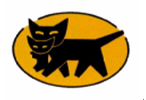Home> Systems/Procedures> Trademarks> Overview> Outline of the Trademark System
Main content starts here.
Outline of the Trademark System
A trademark system introductory video is now available on the Internet!!
The trademark system is explained in an easy-to-understand manner for beginners. Don't miss it.
For overseas users aiming to register a trademark in Japan, check this out!
How to register a trademark in Japan (pamphlet)(PDF:1,193KB)
1. Trademark
A trademark is a mark (distinction sign) used by a business operator to distinguish its own goods/services from goods/services of others (other companies).
When we purchase goods or use services, we use a “trademark” which is a corporate mark and naming of goods and services as one indicator. As a business operator gains more trust from consumers in its own goods and services by marketing efforts, it acquires such a brand image as “reliable” or “safe to buy.” A trademark is sometimes called as “wordless salesperson” and plays an important role as front man of goods and services.
“Trademarks” are industrial property rights to protect “marks” and “naming” attached to goods and services as properties.
Trademarks may include characters, figures, symbols, three-dimensional shapes and a combination thereof.
Starting in April 2015, motion mark, hologram mark, color per se mark, sound mark, and position mark can be registered as trademarks.





In order to obtain a trademark right, it is required to file an application for trademark with the Japan Patent Office for registration. If you use any trademark without obtaining its registration and another company has registered a similar trademark previously, your use may be judged to be infringement of the trademark right of another company. In addition, care should be taken even if you have used a trademark previously, because your use of the trademark right may be judged to be infringement unless the trademark is well known among consumers as an indication mark of own goods or services.
2. Goods and services
A trademark right is one right consisting of a mark and goods or services using this mark.
When an application for trademark registration is filed, it is necessary to designate “a trademark to be registered” and “goods” or “services” for which the trademark is to be used and they must be written in an application for trademark registration.
According to the Trademark Act, goods and services are called “designated goods” and “designated services”, respectively, when they are designated as mentioned above. The scope of a right is decided by these designated goods or designated services.
Moreover, when designated goods or designated services are written, it is also required to write “classification”. “Classification” categorize goods and services according to certain standards and there are Class 1~Class 45.
*Please see the “Information about Classification of Goods and Services” for the details of description of designated goods and designated services and the classification of goods and services. If you wish to investigate the classification of individual goods and services, you are able to search using the Searching Goods & Services ( External link ) in the Japan Platform for Patent Information (J-PlatPat).
3. Application for trademark registration
It is required to file an application for trademark registration with the Japan Patent Office. Japan adopts the first-to-file system in which the registration is granted to a person who has first filed an application, when an application for similar or identical trademark is filed, regardless of whether the trademark has been used previously.
- *Link: Form of filing documents ( External link ) (website of the National Center for Industrial Property Information and Training (INPIT)) (Japanese website)
- *Link: the Japan Platform for Patent Information (J-PlatPat) ( External link ) (you can make a specific search of trademarks in English.)
4. Examination
When an application for trademark registration is filed, the Japan Patent Office examines whether the trademark filed can be registered. Trademarks which cannot be registered are as follows:
- (1) Any trademark used in connection with goods and services of an applicant that are not able to be distinguished from those of other persons
For example, trademarks which simply indicate the origin, place of sale and qualify of goods cannot be registered. In the case where goods are “vegetable”, even if the letters “Hokkaido” are written on boxes, consumers recognize from the letters that they are goods made in Hokkaido and cannot distinguish whose goods they are. Therefore such a indication cannot be registered as a trademark - (2) Trademarks against public interest
For example a trademark which is identical with or similar to the national flag or likely to harm public order and morality (obscene or outrageous characters and figures, racist terms, etc.) cannot be registered. Moreover, a trademark which is likely to mislead as to goods or services (a trademark “_____ whisky” for goods “beer”) cannot be registered. - (3) Trademarks confusingly similar to trademarks of others
A trademark which is identical with or similar to a registered trademark of another person and goods or services which use the trademark are identical or similar cannot be registered.
Whether a trademark is confusingly similar to a trademark of another person is determined by similarity of both the trademarks and the goods/services. In determining similarity of the trademarks, the factors of appearance, sound and concept of the trademarks in accordance with the “Examination Guidelines for Trademarks” are comprehensively determined. Furthermore, determination of similarity of goods and services are made, in principle, in accordance with the “Examination Guidelines for similar goods and services”.
For example, if another person has already owned a registered trademark called “tellurite” (designated goods “digital camera”), an application for trademark “telerite” (designated goods “video camera”) cannot be registered.
(Note 1) “The Examination Guidelines for similar goods and services” prescribe goods and services assumed to be mutually similar in examinations made by the Japan Patent Office and grant codes to each group of similar goods and services (similarity group codes). For example, a similarity group code “25B01” is granted to “stationery” which belongs to class 16. An examination is made by assuming that “pencils”, “pencil lead holders”, “ball-point pens”, “rubber erasers” and “pen cases” are similar each other. In addition, a similarity group code “26A01” is granted to “printed matter”, although it belongs to the same class 16 (For example, a similarity group code of “magazines”, “books” and “pamphlets” is “26A01”) and it is assumed to be goods not similar to “stationery”. The classification of goods and services does not prescribe the relationship of similarity.
5. Effect of trademark registration
When a decision of registration is made as a result of conducting examinations, its establishment is registered in the trademark registration register if annual registration fees are paid within a certain period. This is when the trademark right emerges.
Once the trademark is registered, the right holder can exclusively use the registered trademark for designated goods or designated services. Moreover, it becomes possible to eliminate the use of any trademark similar to his own registered trademark by third parties for goods or services identical with designated goods or designated services and use of any trademark identical with or similar to his own registered trademark for goods or services similar to designated goods or designated services.
The effect of a trademark right extends throughout Japan (however, since it does not extend to foreign countries, it is essential to obtain a right in a country where you intend to do operate any business).
A request for injunction of infringement or a request for compensation for damage may be made against a person who infringes the right.
*See “Effects of Trademark Rights” for more details.
6. Term and renewal of trademark right
The term of trademark rights terminates in ten years from the date of registration of establishment.
However, a trademark aims to protect trust accumulated as a result of operating activities of a business operator. Therefore, the term of ten years may be renewed as many times as required by filing an application for registration of renewal of the term if necessary.
7. Fees
8. History of the trademark system
The trademark system of Japan dates back to the enactment of the trademark ordinance on June 7, 1884 after Korekiyo Takahashi took the lead in starting to consider legislation of trademark protection in the early Meiji era and in proceeding with planning.
It has been revised as needed in response to the accession to the international treaty and changes of economic situations. The current Trademark Act was promulgated on April 13, 1959 and enacted on April 1, 1960 through the Trademark Ordinance on 1888, the Trademark Act on 1899, the Trademark Act on 1909 and the Trademark Act on 1921.
The current Trademark Act has been partially revised several times. The principal revisions include the introduction of the service mark registration system in 1991, the significant revision after the enactment of the current act in 1996 (the introduction of the three-dimensional trademark system, the post-grant opposition system and the revision of related provisions in response to the accession to the Trademark Law Treaty), the introduction of the Regional Collective Trademark System in 2005, the trademark system for retail services or wholesale services in 2006, and the expansion of the scope of trademark protection to include non- traditional trademarks in 2014.
[Last updated 12 October 2023]
|
Contact |
|
Trademark Division, Tel:+81-3-3581-1101(Ex.2805) FAX:+81-3-3580-5907 E-mail: PA1400@jpo.go.jp |